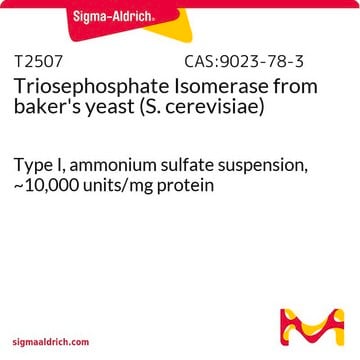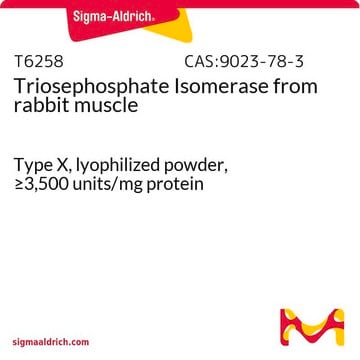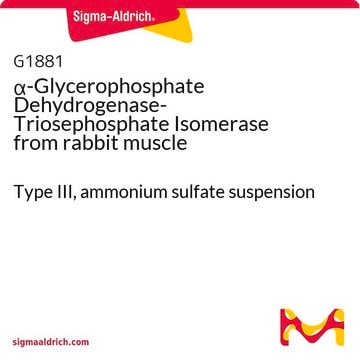R0878
D-Ribulose 1,5-Bisphosphat Tetranatriumsalz Hydrat
≥90% (TLC)
Synonym(e):
D-erythro-2-Pentulose, 1,5-bis(dihydrogenphosphat), D-Ribulose-1,5-biphosphat Tetranatriumsalz Dihydrat, RuDP
About This Item
Empfohlene Produkte
Biologische Quelle
synthetic (inorganic)
Assay
≥90% (TLC)
Form
powder
Verunreinigungen
≤16% water (Karl Fischer)
Farbe
white
Löslichkeit
water: ~50 g/L
Kationenspuren
Na: 17.1-24.6% (dry basis)
Lagertemp.
−20°C
InChI
1S/C5H12O11P2/c6-3(1-15-17(9,10)11)5(8)4(7)2-16-18(12,13)14/h3,5-6,8H,1-2H2,(H2,9,10,11)(H2,12,13,14)/t3-,5-/m1/s1
InChIKey
YAHZABJORDUQGO-NQXXGFSBSA-N
Suchen Sie nach ähnlichen Produkten? Aufrufen Leitfaden zum Produktvergleich
Anwendung
- Bio-Inspired Microreactors Continuously Synthesize Glucose Precursor from CO(2) with an Energy Conversion Efficiency 3.3 Times of Rice.: This study leverages D-Ribulose 1,5-bisphosphate sodium salt hydrate in bio-inspired microreactors to synthesize glucose precursors from CO₂. The approach demonstrates an energy conversion efficiency significantly higher than that of rice, highlighting its potential for efficient carbon fixation and bioengineering applications (Zhu et al., 2024).
- Designing Stacked Assembly of Type III Rubisco for CO₂ Fixation with Higher Efficiency.: The research utilizes D-Ribulose 1,5-bisphosphate sodium salt hydrate to enhance the efficiency of CO₂ fixation through the stacked assembly of Type III Rubisco. This innovative approach offers improvements in metabolic engineering for carbon capture and utilization (Zeng et al., 2022).
- Continuous artificial synthesis of glucose precursor using enzyme-immobilized microfluidic reactors.: This study explores the continuous synthesis of glucose precursors using microfluidic reactors with immobilized enzymes, including D-Ribulose 1,5-bisphosphate sodium salt hydrate. The technique demonstrates potential for scalable biochemical production processes (Zhu et al., 2019).
Biochem./physiol. Wirkung
Sonstige Hinweise
Lagerklassenschlüssel
11 - Combustible Solids
WGK
WGK 3
Flammpunkt (°F)
Not applicable
Flammpunkt (°C)
Not applicable
Persönliche Schutzausrüstung
Eyeshields, Faceshields, Gloves, type P2 (EN 143) respirator cartridges
Analysenzertifikate (COA)
Suchen Sie nach Analysenzertifikate (COA), indem Sie die Lot-/Chargennummer des Produkts eingeben. Lot- und Chargennummern sind auf dem Produktetikett hinter den Wörtern ‘Lot’ oder ‘Batch’ (Lot oder Charge) zu finden.
Besitzen Sie dieses Produkt bereits?
In der Dokumentenbibliothek finden Sie die Dokumentation zu den Produkten, die Sie kürzlich erworben haben.
Kunden haben sich ebenfalls angesehen
Unser Team von Wissenschaftlern verfügt über Erfahrung in allen Forschungsbereichen einschließlich Life Science, Materialwissenschaften, chemischer Synthese, Chromatographie, Analytik und vielen mehr..
Setzen Sie sich mit dem technischen Dienst in Verbindung.














